Moments in Revolutionary History
Resistance to the Stamp Act (1765)
The
king imposed a stamp duty on all published materials in the colonies,
including newspapers. Furious Bostonians boycotted English goods in
response.
Boston Massacre (1770)
Angry
colonists picked a fight with British troops in front of the Old State
House, resulting in the deaths of five unarmed Bostonians.
Samuel Adams Tea Tax Speech (1773)
Adams’
incendiary speech during a forum at the Old South Meeting House
inspired the Boston Tea Party, the most subversive action undertaken yet
in the debate over colonial secession.
Boston Tea Party (1773)
Led
by Samuel Adams, the Sons of Liberty protested against the king’s tax
policy on tea by boarding three British East India Company ships and
dumping their cargo into Boston Harbor, a watershed moment of colonial
defiance.
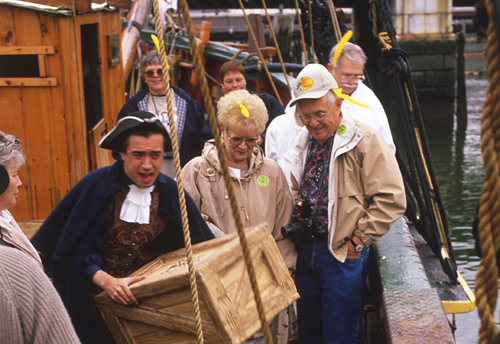
Reenactment of the Boston Tea Party
Paul Revere’s Ride (1775)
Revere
rode to Lexington to warn revolutionaries Samuel Adams and John Hancock
that British troops intended to arrest them. One of the bravest acts of
the war, it would be immortalized in the Longfellow poem The Midnight Ride of Paul Revere.
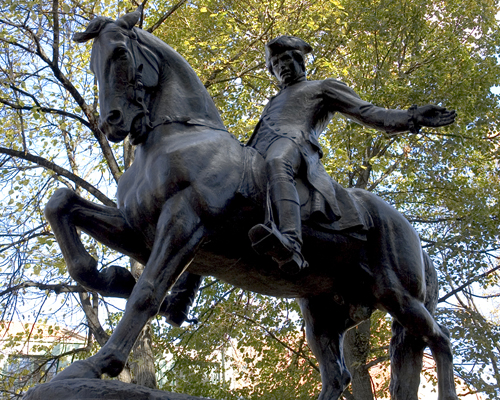
Statue of Paul Revere
Battle of Lexington (1775)
Revere’s ride was followed by the first exchange of fire between the ragtag colonist army and the British at Lexington.
Battle of Bunker Hill (1775)
The
colonists’ fortification of Charlestown resulted in a full-scale
British attack. Although defeated, the colonists’ resolve was galvanized
by this battle.
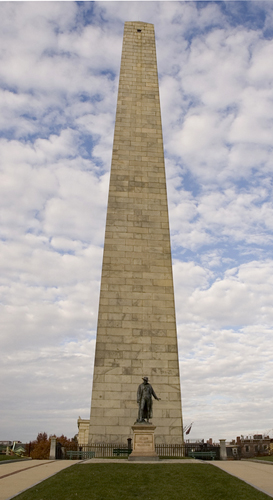
Bunker Hill
Washington Takes Command (1776)
The
Virginia gentleman farmer, George Washington, led the newly-formed
Continental Army south from Cambridge to face British troops in New
York.
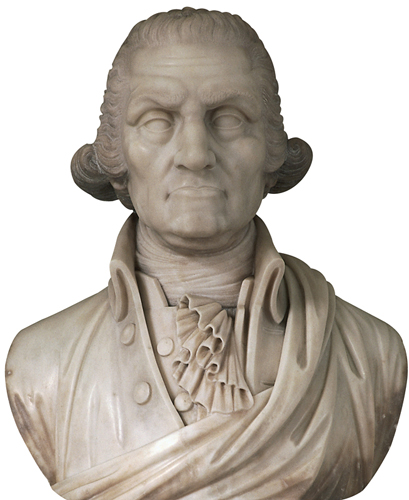
George Washington
Fortification of Dorchester Heights (1776)
Fortifying
the mouth of Boston harbor with captured cannon, Washington put the
Royal Navy under his guns and forced a British retreat from the city.
Declaration of Independence (1776)
On
July 4, the colonies rejected all allegiance to the British Crown.
Independence was declared from the Royal Governor’s headquarters, known
today as the Old State House.
Massachusetts State House
The 1798 Massachusetts
State House is Charles Bulfinch’s masterwork, and among the nation’s
most mimicked – not to mention earliest – examples of public
architecture. With its brash design details, imposing stature, and
liberal use of fine materials, the State House embodies the optimism
that ran through post-revolutionary America. The building is best
understood in three distinct sections: the original Bulfinch front; the
marble wings constructed in 1917; and the yellow-brick 1895 addition,
known as the Brigham Extension after the architect who designed it. Just
below Bulfinch’s central colonnade, statues of famous Massachusetts
figures strike poses among them are the great orator, Daniel Webster,
President J. F. Kennedy, and Quaker Mary Dyer, who was hanged in 1660
for challenging the authority of Boston’s religious leaders. Directly
below the State House’s immense gilded dome is the Senate Chamber, which
has hosted some of the most influential debates and speeches in US
history. The government’s larger legislature, the House of
Representatives, convenes in the Brigham Extension. While the building’s
principal purpose remains governmental, the State House also functions as a working museum, boasting important murals, statues, and artifacts from Massachusetts history.
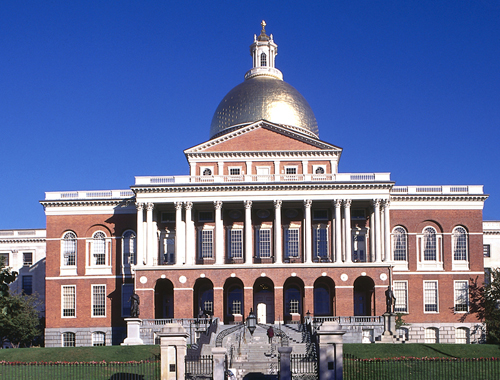
Massachusetts State House
The Sacred Cod
Bestowed on the House of Representatives by Boston merchant,
Jonathan Rowe, the carving of the Sacred Cod has presided over the
Commonwealth’s legislative activities since 1784. It disappeared briefly
in 1933, when Harvard’s Lampoon magazine orchestrated a dastardly
“codnapping” prank.
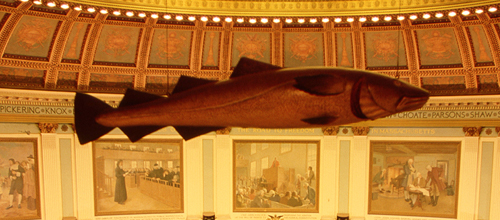
Top 10 State House Features